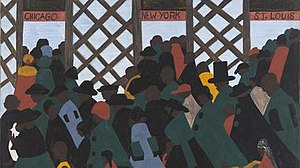“Why did they go? What were they looking for? How did they get the courage to leave all they ever knew for a place they had never seen…? Was it a braver thing to stay, or was it braver to go? What would have happened is she had not gone north and met and married the Tuskegee Airman, a migrant himself, who would become my father? Would I (and millions of other people born in the North and West) have ever existed?” – The Warmth of Other Suns: The Epic Story of America’s Great Migration

Reading through the first part of this story, I paused after stumbling upon the series of questions a young migrant girl asks of a photograph. These rhetorical questions allow us entry into this girl’s way of thinking, but also grant us some important context clues to her family situation. For example, that this girl’s mother also traveled out of the south in search of anything better than gym crow. And this context clue, without ever directly telling us so allows us to draw the conclusion that this girl is of African-American descent.
Using this girl’s story as context and then pulling back from any particulars, I was amazed at how little substance I really knew about the Great Migration. I consider myself a history lover; I’ve taken history classes and watched documentaries all my life, but reading this I found that all I really knew was that the Great Migration consisted of many black families moving north after the failure of reconstruction and the subsequent institution of Jim Crow. But reading the statistics of this movement of people as well as some of these personal accounts, the Great Migration begins to sound less like migrant stories and more like immigrant stories. Stories of arriving in new faraway places where people don’t look or speak the way you do, arriving to cities already packed with people, moving in with relatives you’ve never met or packing in entire families into single bedrooms, and then once there trying to find a job somewhere you’ve never been. It blew my mind that this one sentence could so closely describe the plight of the African American migrating out of the south, but could also perfectly describe the initial struggle of the immigrant who just arrived at Ellis Island.

Leave a Reply